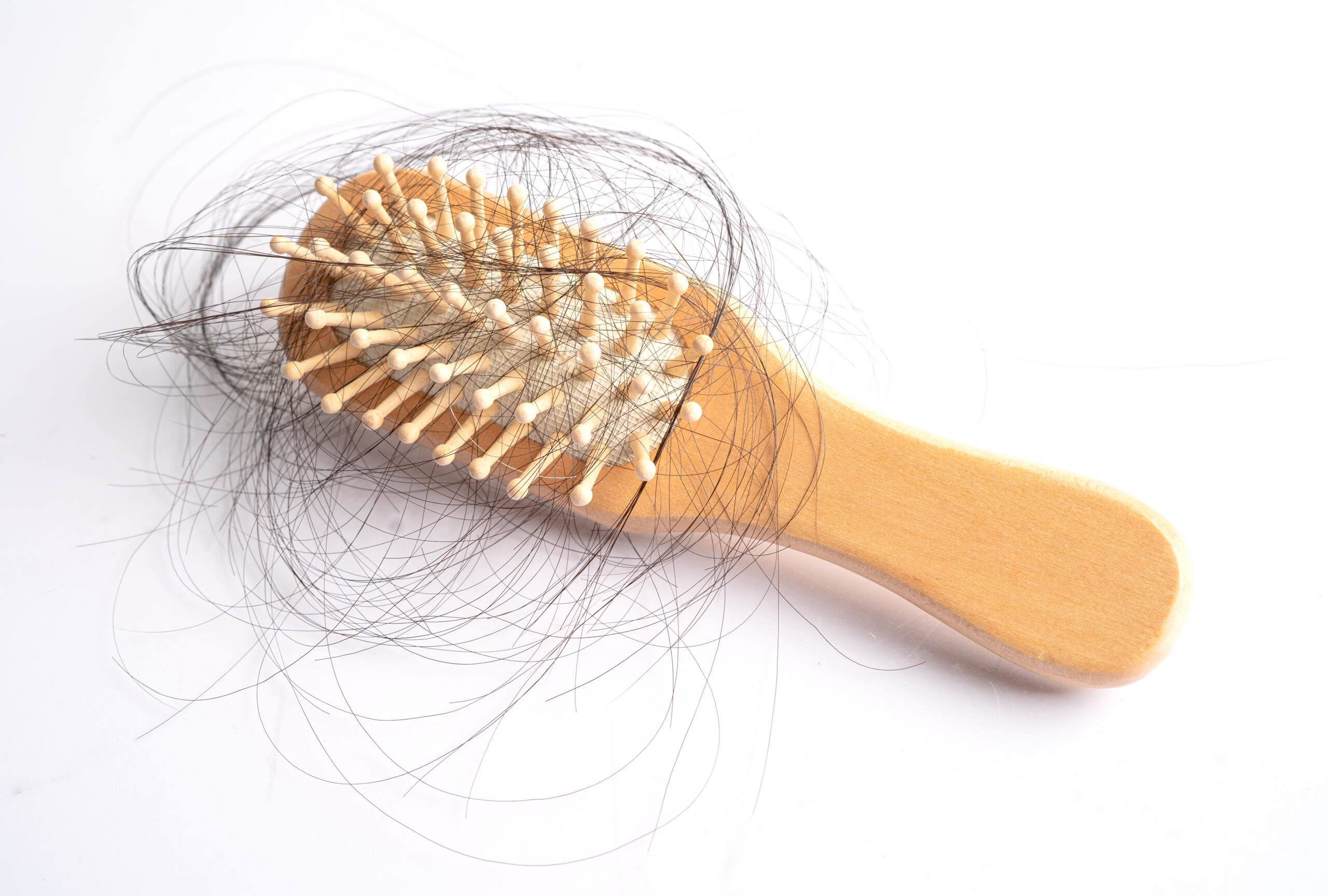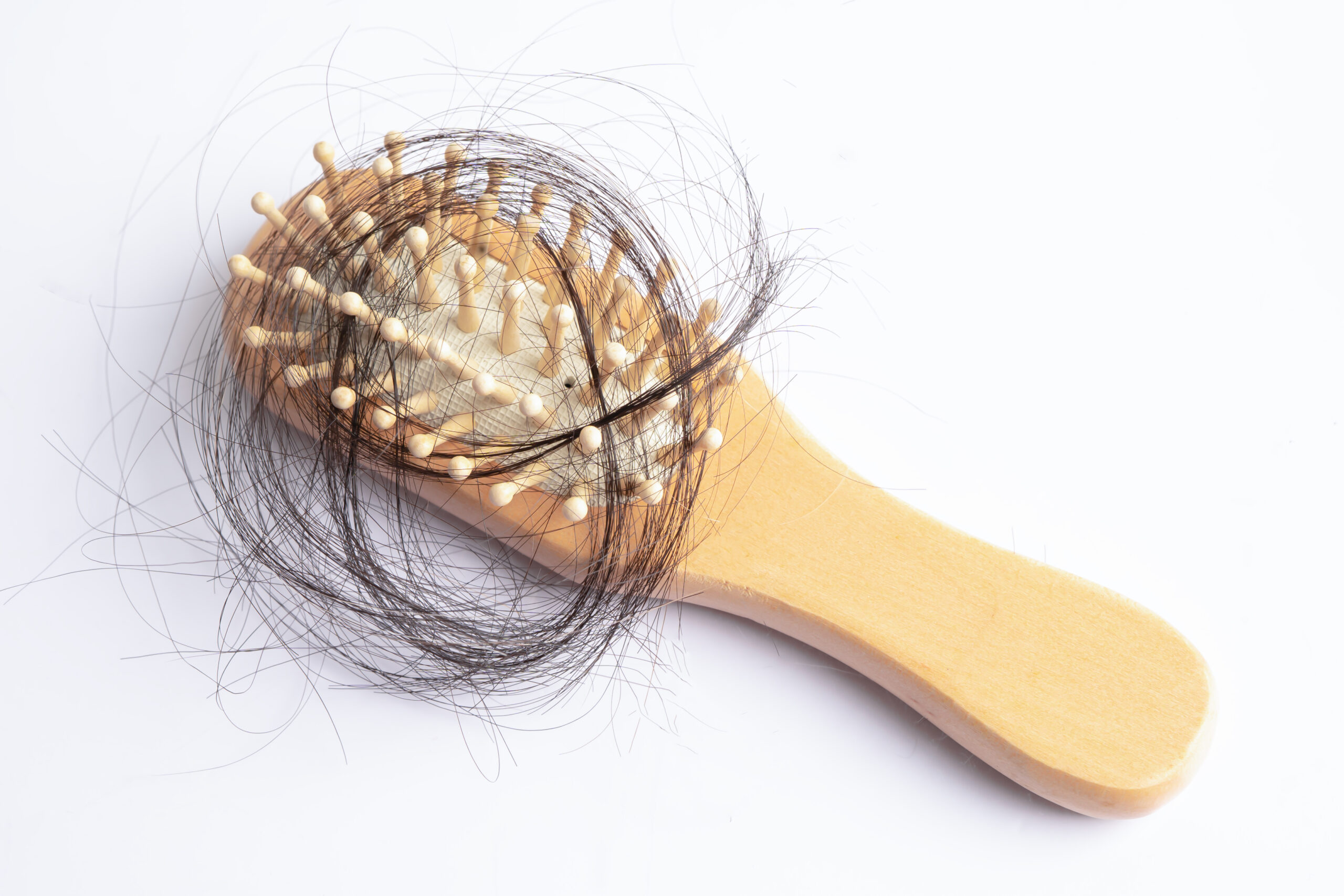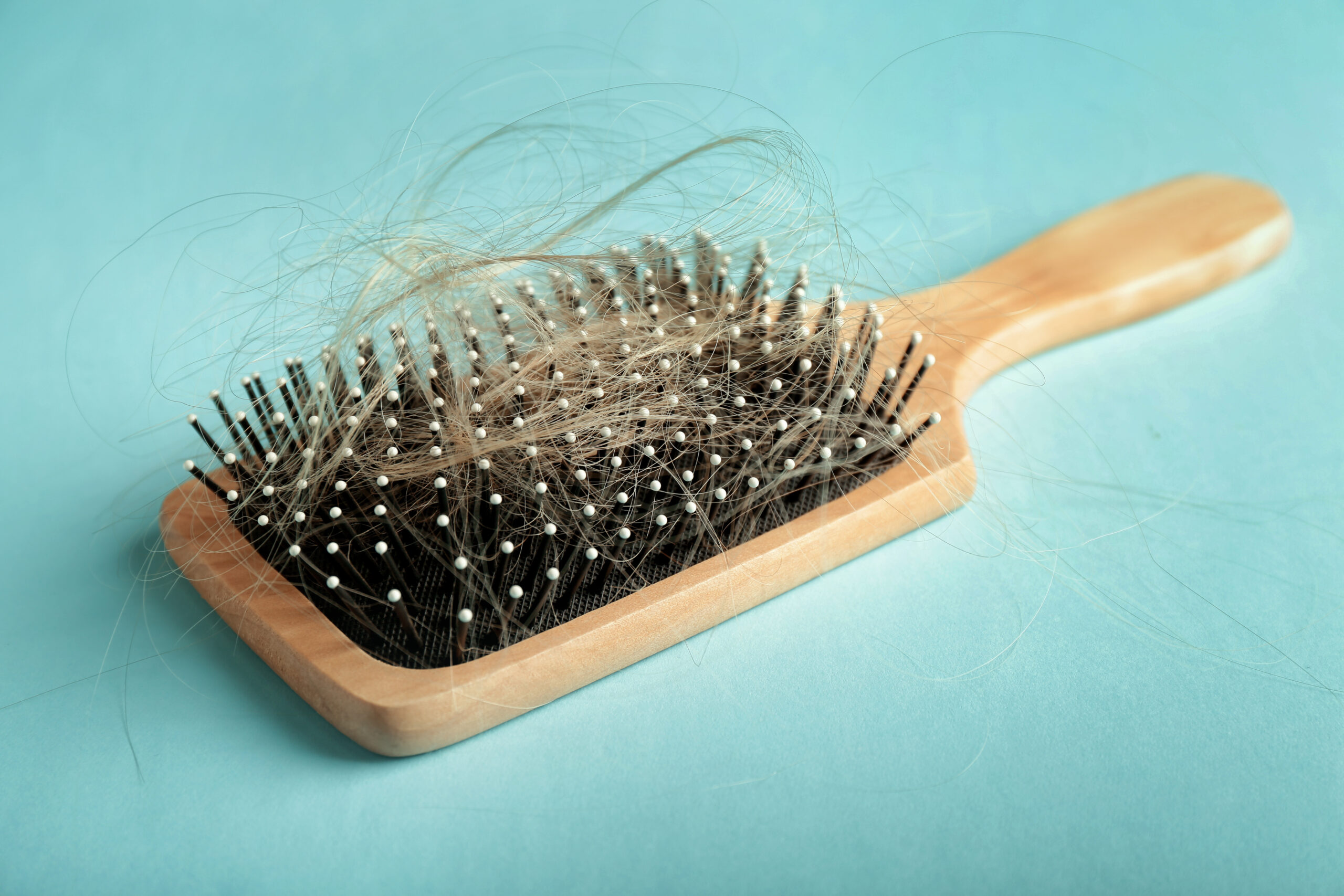Thinning hair can be a deeply distressing experience for many women, especially as we age and face changes in our bodies.
Our hair often represents our identity and sense of style, so watching it thin can significantly impact our self-esteem, confidence, and how we perceive ourselves.
Each strand that falls away may feel like a piece of our spirit being lost, but take heart—you're not alone, and there's hope.
The good news is that with the right care and attention, it’s possible to manage thinning hair and maintain a healthy, full look.
This article aims to provide you with comprehensive and effective fashion tips on how to care for thinning hair, helping you feel beautiful and confident every day.
Understanding Thinning Hair
Causes of Thinning Hair
Hormonal Changes
Hormonal fluctuations, particularly during menopause, can lead to thinning hair.
As estrogen levels decline, hair growth can slow down, and hair follicles may shrink, leading to thinner hair.
Hormonal imbalances related to thyroid issues or pregnancy can also impact hair density.
Understanding these changes can help you address them more effectively, ensuring your hair receives the support it needs during these transitions.
Genetics
Genetic predisposition plays a significant role in hair thinning.
If your family members experienced thinning hair, you might be more likely to as well.
Androgenetic alopecia, also known as female pattern baldness, is a common hereditary condition that can cause hair thinning.
Knowing your family history can prepare you for potential changes and prompt earlier intervention and care.
Nutritional Deficiencies
A lack of essential nutrients, such as vitamins and minerals, can impact hair health.
Deficiencies in iron, vitamin D, and biotin are commonly linked to hair thinning.
Ensuring a balanced diet rich in these nutrients can support hair health and growth.
Consulting with a nutritionist can help tailor a diet plan that meets your specific needs, promoting overall wellness and robust hair health.
Stress and Lifestyle Factors
Chronic stress and unhealthy lifestyle choices can contribute to hair loss.
High-stress levels can trigger a condition called telogen effluvium, where hair follicles enter a resting phase and shed excessively.
Poor diet, lack of exercise, and inadequate sleep can all negatively affect hair health.
Incorporating stress-relief practices like yoga, meditation, or even regular walks can significantly reduce the impact of stress on your hair.
Medical Conditions and Medications
Certain medical conditions, such as thyroid disorders, autoimmune diseases, and scalp infections, can cause hair thinning.
Some medications, including chemotherapy drugs, blood thinners, and certain antidepressants, can also lead to hair loss.
Consulting a healthcare provider can help manage these underlying issues.
Regular medical check-ups and open communication with your doctor about any side effects of medications can lead to timely interventions.
Identifying Thinning Hair
Signs and Symptoms of Thinning Hair
Look for signs such as a wider parting, more scalp visibility, and excessive hair shedding.
You might notice more hair in your brush, on your pillow, or in the shower drain.
If you see your ponytail becoming thinner or experience significant hair loss over time, it might indicate thinning hair.
Keeping a journal of these observations can help track the progression and effectiveness of treatments.
Distinguishing Normal Hair Shedding from Excessive Hair Loss
It's normal to lose about 50-100 hairs a day as part of the hair growth cycle.
However, if you’re noticing much more than that or seeing clumps of hair fall out, it may be time to seek professional advice.
Keeping a hair loss diary can help track the extent and pattern of shedding.
Understanding the difference between normal shedding and excessive loss can help in seeking timely and appropriate treatments.
Effective Hair Care Practices
Gentle Hair Care Routine
Choosing the Right Shampoo and Conditioner for Thinning Hair
Look for shampoos and conditioners specifically designed for thinning hair.
Look for products with ingredients that promote volume and thickness, such as biotin, keratin, and niacin.
Avoid shampoos with harsh sulfates, which can strip natural oils and weaken hair.
Regularly switching up your products to prevent build-up can also keep your hair and scalp healthy.
How Often to Wash and Condition Thinning Hair
Wash your hair as needed to keep your scalp clean, but avoid over-washing as it can strip your hair of natural oils.
Conditioning is essential to keep hair hydrated and manageable.
For most women, washing hair 2-3 times a week is sufficient, but it can vary based on your hair type and lifestyle.
Listening to your hair’s needs and adapting your routine accordingly can make a significant difference in maintaining its health.
Techniques for Gentle Washing and Drying
Use lukewarm water and gentle, circular motions when washing your hair to avoid tangling and breakage.
Pat your hair dry with a soft towel instead of rubbing it vigorously, which can cause damage and breakage.
Consider using a microfiber towel or an old T-shirt to reduce friction.
These small changes can protect your hair from unnecessary stress and damage, promoting stronger strands.
Avoiding Hair Damage
Heat Styling and Its Impact on Thinning Hair
Minimize the use of heat styling tools like blow dryers, flat irons, and curling irons, as excessive heat can damage and weaken hair.
When you do use them, apply a heat protectant spray to reduce damage. Try air-drying your hair or using the lowest heat setting possible.
Alternating between heat-free styles can give your hair the break it needs to recover and grow stronger.
Minimizing the Use of Harsh Chemicals and Treatments
Avoid harsh chemical treatments like perms, relaxers, and frequent coloring, which can weaken hair and exacerbate thinning.
Look for gentler, natural alternatives and give your hair breaks between treatments.
When coloring, choose ammonia-free dyes and consider low-lights instead of full color.
These choices can help maintain the integrity of your hair while allowing you to enjoy the benefits of styling.
Protecting Hair from Environmental Damage
Wear a hat or use hair products with UV protection when exposed to the sun to prevent UV damage.
Protect your hair from harsh weather conditions, such as wind and cold, by using protective hairstyles and scarves.
Chlorine from swimming pools and salt from the ocean can also dry out hair, so rinse your hair after swimming and use protective products.
These precautions can preserve your hair’s health and prevent environmental factors from causing damage.

Nourishing the Hair from Within
Balanced Diet for Hair Health
Essential Nutrients for Hair Growth and Thickness
Ensure your diet includes key nutrients such as iron, zinc, vitamins A, C, D, and E, and omega-3 fatty acids.
These nutrients support hair health and growth by nourishing hair follicles and promoting a healthy scalp environment.
A diet rich in these nutrients can not only improve your hair health but also contribute to your overall well-being.
Foods to Incorporate into Your Diet
Eat a variety of fruits, vegetables, lean proteins, and healthy fats. Foods like salmon, spinach, eggs, and nuts are particularly beneficial for hair health.
Berries, sweet potatoes, and avocados are also excellent choices due to their high vitamin and antioxidant content.
Including these foods in your meals can make a noticeable difference in the health and appearance of your hair.
Supplements that May Support Hair Health
Consider taking supplements like biotin, iron, and omega-3 fatty acids if you’re not getting enough from your diet.
Collagen supplements can also support hair health.
Always consult your doctor before starting any new supplements to ensure they’re safe and appropriate for you.
Supplements can be a valuable addition to a balanced diet, providing extra support for hair growth and health.
Staying Hydrated
Importance of Hydration for Hair and Scalp Health
Proper hydration keeps your hair and scalp healthy. Dehydration can lead to dry, brittle hair that’s more prone to breakage.
A well-hydrated scalp provides the right environment for hair growth and reduces issues like dandruff and irritation.
Staying hydrated can have far-reaching benefits for both your hair and your overall health.
Tips for Maintaining Proper Hydration
Drink plenty of water throughout the day. Aim for at least 8 glasses of water daily to keep your body and hair well-hydrated.
Herbal teas and water-rich foods like cucumbers and watermelon can also contribute to your hydration goals.
Incorporating these habits into your daily routine can ensure that your hair remains strong and healthy.
Scalp Care
Importance of Scalp Health
How a Healthy Scalp Supports Hair Growth
A healthy scalp provides a strong foundation for hair growth by ensuring that hair follicles receive the necessary nutrients and oxygen to produce healthy hair.
Maintaining a clean and balanced scalp environment is crucial for preventing issues like hair thinning and loss.
A healthy scalp is the cornerstone of healthy hair, making scalp care an essential part of your hair care routine.
Common Scalp Issues that Can Affect Hair Health
Conditions like dandruff, psoriasis, and seborrheic dermatitis can hinder hair growth by clogging hair follicles and causing inflammation.
Keeping your scalp clean and healthy is crucial for preventing these issues and promoting optimal hair growth.
Regular scalp care can prevent these problems and support the overall health of your hair.
Scalp Care Techniques
Regular Scalp Massages to Stimulate Blood Flow
Massaging your scalp can increase blood flow, promoting hair growth.
Use your fingertips to gently massage your scalp in circular motions for a few minutes daily.
Scalp massages can also help distribute natural oils, keeping your scalp and hair moisturized.
Incorporating essential oils like rosemary or peppermint into your massage routine can enhance the benefits, as these oils are known for their hair growth properties.
Using Scalp Treatments and Exfoliants
Use scalp treatments and exfoliants to remove buildup and keep your scalp clean.
Look for products with ingredients like tea tree oil, salicylic acid, or charcoal, which can help cleanse and detoxify the scalp.
Regular exfoliation can prevent clogged follicles and promote a healthy scalp environment.
Using these treatments as part of your weekly routine can keep your scalp in top condition, supporting healthy hair growth.
Choosing the Right Hair Products for Scalp Health
Select shampoos and conditioners formulated for scalp health.
Avoid products with harsh chemicals that can irritate the scalp and opt for those with soothing and nourishing ingredients.
Reading labels and choosing products designed to support scalp health can make a significant difference in the overall health of your hair.
These products can maintain the delicate balance of your scalp, preventing issues that can lead to hair thinning.

Styling Tips for Thinning Hair
Choosing the Right Haircuts
Flattering Haircuts for Thinning Hair
Look for haircuts that add volume and movement to your hair. Layers, textured cuts, and shorter styles can create the illusion of thicker hair.
Discuss with your stylist the best options for your hair type and face shape.
Regular trims can also prevent split ends and keep your hair looking healthy and full.
A professional stylist can offer personalized advice to help you achieve a look that enhances your hair’s appearance.
Avoiding Heavy Layers and Lengths
Heavy layers and long lengths can weigh down thinning hair, making it look flat. Choose styles that add lift and volume instead.
Avoid hairstyles that require excessive heat styling or tight pulling, as these can cause further damage to thinning hair.
Opting for lighter, more manageable styles can help you maintain a fuller, healthier look.
Styling Products and Techniques
Volumizing Products for Thinning Hair
Use volumizing shampoos, conditioners, and styling products to add body and fullness to your hair.
Look for products with ingredients like keratin, collagen, and proteins that can strengthen and thicken hair strands.
Root-lifting sprays and mousses can also provide extra volume. These products can make a significant difference in the appearance of your hair, giving it the boost it needs.
Techniques for Creating Volume and Texture
Blow-dry your hair upside down or use a round brush to lift roots while drying to create volume.
Texturizing sprays and powders can add grip and fullness to fine hair.
Experiment with different techniques and tools to find what works best for your hair type.
Simple changes in your styling routine can dramatically improve the look of your hair, making it appear thicker and more vibrant.
Hair Fibers and Concealers
Hair fibers and concealers can instantly make hair look thicker by adhering to existing hair and scalp.
They come in various shades and can be applied to sparse areas to create the appearance of fuller hair.
These products are especially useful for quick fixes and special occasions.
They offer a temporary solution that can boost your confidence and improve the overall appearance of your hair.
When to Seek Professional Help
Consulting a Dermatologist or Trichologist
When to Consider Seeking Professional Advice
If you notice significant hair thinning or hair loss, consult a dermatologist or trichologist.
These professionals can diagnose underlying conditions and recommend appropriate treatments.
Early intervention can prevent further hair loss and improve outcomes. Seeking professional help can provide you with tailored solutions and peace of mind.
Treatments and Therapies Available for Thinning Hair
Professionals can offer treatments like PRP (platelet-rich plasma) therapy, laser therapy, and prescription medications to address hair thinning.
PRP involves injecting your own platelet-rich plasma into the scalp to stimulate hair growth.
Laser therapy uses low-level lasers to stimulate hair follicles and promote growth.
These advanced treatments can offer significant improvements for those experiencing severe hair thinning.
Hair Transplant and Other Medical Solutions
Overview of Hair Transplant Procedures
Hair transplants involve relocating hair follicles from one part of the scalp to thinning areas.
It’s a more permanent solution for significant hair loss.
There are different techniques, such as follicular unit transplantation (FUT) and follicular unit extraction (FUE), each with its own benefits and considerations.
Discussing these options with a specialist can help you decide the best course of action for your needs.
Alternative Medical Treatments for Hair Thinning
Other treatments include microneedling, low-level laser therapy, and prescription medications like minoxidil and finasteride.
Microneedling involves using tiny needles to create micro-injuries on the scalp, stimulating hair growth.
Minoxidil is a topical treatment that can slow hair loss and promote regrowth, while finasteride is an oral medication that can prevent hair loss.
Exploring these medical options can provide additional avenues for managing hair thinning effectively.
Emotional and Psychological Impact
Coping with Hair Loss
Strategies for Managing the Emotional Impact of Thinning Hair
It’s normal to feel distressed about thinning hair. Talk to friends, join support groups, and seek professional counseling if needed.
Sharing your experiences with others who understand can provide emotional relief and practical tips for managing hair loss.
Building a support network can help you navigate the emotional challenges and find comfort in knowing you’re not alone.
Support Groups and Resources for Women Experiencing Hair Loss
Join online forums and local support groups where you can share experiences and tips with other women facing similar issues.
Websites and organizations dedicated to hair loss can offer valuable resources and support networks.
Engaging with these communities can provide practical advice, emotional support, and a sense of solidarity.
Building Confidence and Self-Esteem
Embracing Your Unique Beauty
Remember that beauty comes in many forms. Embrace your unique features and focus on what makes you feel beautiful.
Celebrate your individuality and find ways to express your personal style, whether through fashion, makeup, or accessories.
Confidence in your uniqueness can transform your perception of beauty and enhance your self-esteem.
Finding Ways to Feel Confident Despite Hair Thinning
Experiment with different hairstyles, makeup, and accessories that make you feel confident.
Focus on maintaining a positive outlook and self-image. Surround yourself with supportive people and engage in activities that boost your self-esteem.
These practices can help you feel beautiful and confident, regardless of any changes in your hair.
Conclusion
Thinning hair can be challenging, but with the right care and attention, you can manage it effectively and maintain a beautiful, healthy look.
By understanding the causes, adopting gentle hair care practices, nourishing your hair from within, and choosing the right styles and products, you can achieve fuller, thicker hair.
Remember, you’re not alone on this journey.
Thanks for reading! If you found this article helpful, please save our site in your bookmarks and share it with others who might benefit.
Be sure to check out our Beauty section here on Woman Vitality for more articles just like this one.
References
Professional, C. C. M. (n.d.). Hair loss in women. Cleveland Clinic. https://my.clevelandclinic.org/health/diseases/16921-hair-loss-in-women
Worth, T. (2023, August 27). Women and hair loss: causes. WebMD. https://www.webmd.com/skin-problems-and-treatments/hair-loss/women-hair-loss-causes
How hormones contribute to hair loss: Allure Dermatology: Dermatologists. (n.d.). https://www.alluredermny.com/blog/how-hormones-contribute-to-hair-loss#:~:text=Hormones%20affect%20hair%20loss%20because,and%20hair%20growth%20slows%20down.
Rd, R. R. M. (2024, February 5). The 13 best foods for hair Growth. Healthline. https://www.healthline.com/nutrition/foods-for-hair-growth
How to Get a Healthy Scalp: 10 Tips from Haircare Experts. (n.d.). https://www.livingproof.com/hair-101/healthy-scalp-tips.html

Leave A Comment